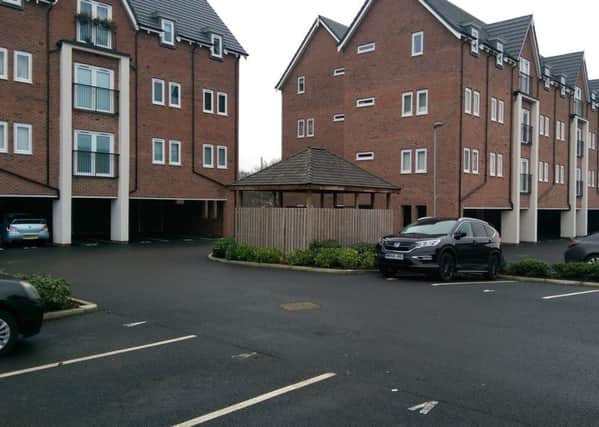Joey Talbot: Time for joined-up planning '“ build new homes and public transport links at same time


The planning applications for new residential developments speak of ‘sustainable communities’ and ‘urban villages’, vibrant neighbourhoods and active lifestyles. But what is it actually like to live there?
I have visited housing developments across England as part of research with Transport for New Homes, a project funded by the Foundation for Integrated Transport and the RAC Foundation.
Advertisement
Hide AdAdvertisement
Hide AdWe recently released our summary report, in which we found that many of these new estates force people into car dependency. On top of the often high price of buying or renting a home, families are almost obliged to have a second car. For example, at Wynyard Park in Teesside, the only public transport is a private minibus that runs just five times a day, while a major dual carriageway with no pedestrian crossing cuts off the homes from local shops or other facilities.
Car dependency has many negative impacts. There is often so much space devoted to road access and parking that little room is left for urban trees, grass verges and gardens. Yet 24 per cent of households in Yorkshire don’t own a car, with people reliant on public transport to get around. Physical inactivity is a leading cause of health problems from obesity to depression. Then we have the exacerbation of air pollution, congestion, and carbon emissions.
In Yorkshire, we visited Allerton Bywater near Leeds. When Allerton Colliery closed in 1992, people were worried that the village could face dereliction and decline. To prevent this, new homes were built on the colliery site.
This is one of the better schemes that we have come across. The new homes are in the centre of the village and it is easy to walk to the local shop, cafe or primary school. A cycle path runs right through the village on a former railway line. Community buildings have been renovated, and a £500,000 fund was set up for local community projects.
Advertisement
Hide AdAdvertisement
Hide AdThis is in sharp contrast with the situation we’ve seen in many places, where new estates have been built in a field off a link road, lacking access to basic services, in isolated bubbles disconnected from the existing community.
The North of England is crying out for investment in better public transport. New greenfield estates are often built in the wrong place for rail, rapid transit or bus, but even when good opportunities exist, the unpredictability of funding means they can’t be properly made use of. Chapelford Urban Village in Warrington was one of the few places we found where a new railway station is being built, but this is almost 15 years since the first homes at Chapelford were sold, and the estate is full to the brim with parked cars.
It doesn’t have to be this way. We also looked at how new homes are built on the continent. The difference couldn’t be more stark. We visited thriving Dutch new towns filled with market squares, urban farms, shops and libraries. Houten, a new town close to Utrecht, is built with a railway station right in the centre of town, a bicycle hub immediately underneath the station. Walking or cycling is the natural and easiest way to get around.
How do they do it so differently? The planning system in the Netherlands firmly insists on sustainable modes of travel. Planning authorities take a stronger role in deciding where and what to build. The uplift in land value when an area is zoned for residential development is used for the public good, which means there is ample funding for new stations, rapid transit, cycle and walking routes, plus other community infrastructure and affordable homes.
Advertisement
Hide AdAdvertisement
Hide AdThere are some promising signs in England too. Our town centres need attention, and homes in urban areas are more likely to be close to employment and public transport, although we must be careful to ensure these homes are affordable for all.
Rather than build new homes as an estate off a roundabout, with business and retail parks elsewhere, why not combine these elements into a place that feels more like a real town, with local businesses based along walkable streets? This way, new homes can make a positive difference to our communities in Yorkshire.
Joey Talbot is a researcher with Transport for New Homes. He lives in Leeds and is one of the authors of their report, available at www.transportfornewhomes.org.uk.